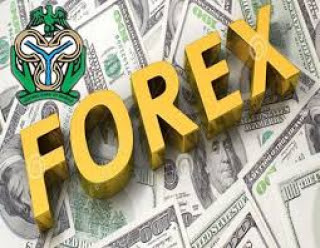Nigeria’s currency, the Naira marginally appreciated in value against the US dollar at the black market in the morning hours on Thursday and traded at N742/$1, indicating a slight gain of 0.13% from N743/$1 it traded on Wednesday.
According to information from black market traders, the Naira, however, depreciated at the cryptocurrency peer-to-peer (P2P) FX market by 0.29% to trade at N748.7/$1 as against the N746.57/$1 it traded at the same time the previous day.
The local currency had exchanged at the Importer & Exporter (I&E) official window for N441.5/$1 on Wednesday, indicating a slight depreciation of 0.06% from the N441.25/$1 it traded the preceding day.
However, the FX turnover at the I&E window increased by 71.73% to $127.65 million on Wednesday from the $74.33 million that was traded on Tuesday.
Meanwhile, official data also indicated that Nigeria’s external reserve stood at $37.76 billion on Wednesday, reflecting a decrease of 0.1% when compared to $37.96 billion in the reserve the previous day.
Over the past years, the Central Bank of Nigeria (CBN) has been supplying dollars to FX traders at the official window and the licensed traders at the parallel market until recently when it suspended supply to Bureaux De Change (BDC) traders, in its efforts to achieve some stability in the currency’s exchange rate.
But then, despite the interventions the Naira has not improved in exchange rate value, trading at over N700/$1 over the past weeks in the parallel market as against the about N515/$1 it was trading before the withdrawal of FX supply by the apex bank to the Bureaux De Change (BDC) operators.
The apex bank discontinued the sale of FX to BDC operators last year following speculations that some of them were engaging in round-tripping of the dollars supplied them to meet foreign exchange needs of customers.
The nation’s foreign reserve has not really grown over the past months, oscillating between $36 billion and $40 billion, due partly to the apex bank’s interventions, particularly the official market, to achieve some exchange rate stability for the local currency.
Many analysts attributed the worrisome development to other factors, including the changing pattern of foreign trade especially as it relates to the global supply chain in recent months, institutional changes in the economy and structural shifts in production, amongst others.






